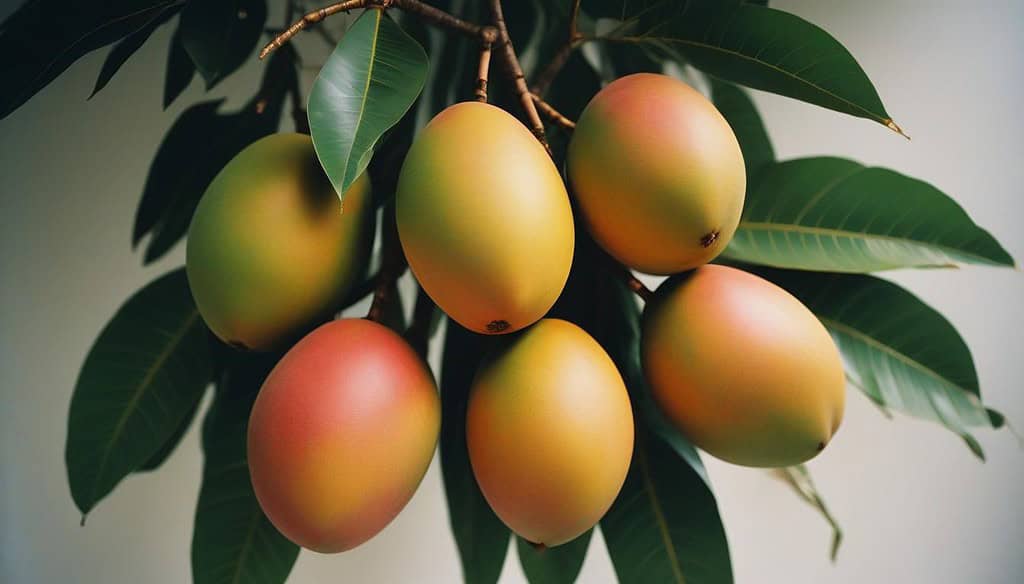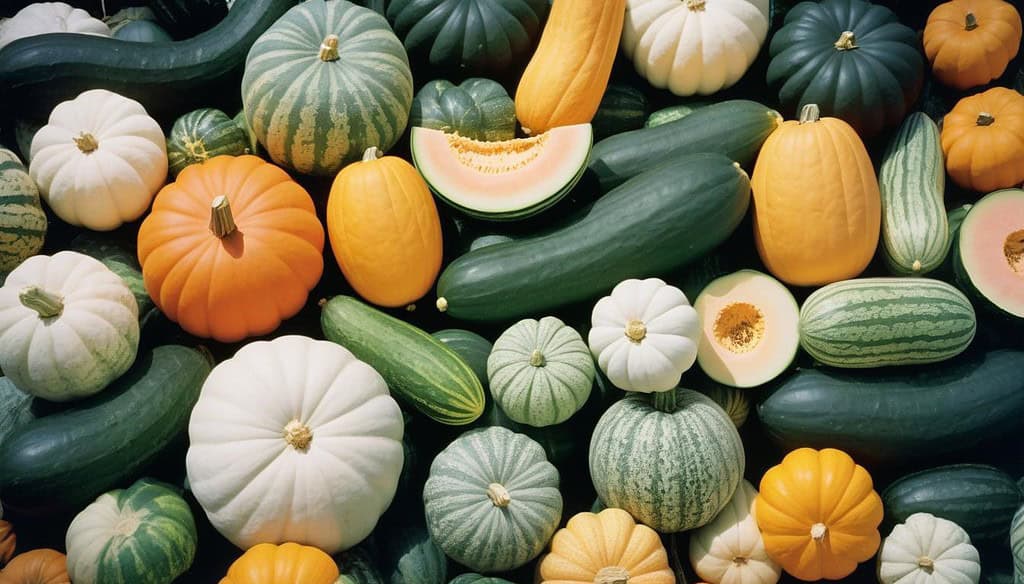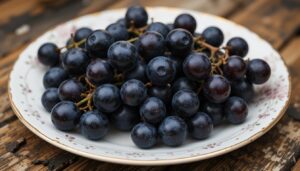Table of Contents
Fruit Families in Our Daily Lives

Fruit Families in Our Daily Lives
Fruits are an essential part of our diets, offering not only an array of vibrant flavors but also vital nutrients that contribute to overall health. Many of the fruits we enjoy every day belong to specific plant groups called fruit families, each providing a unique variety of textures, tastes, and nutritional benefits. From the sweetness of an apple to the tang of a lemon, our meals are enriched by the diversity these families bring to our plates. One of the most familiar is the Rose family, which produces beloved fruits like apples, pears, and cherries.
Then there is the Citrus family, known for zesty options like oranges and lemons that are indispensable for refreshing drinks and adding acidity to dishes. Equally significant is the Banana family, delivering energy-rich bananas and plantains, essential for quick snacks or key ingredients in various recipes. Another vital contributor is the Grape family, whose fruits are savored fresh, dried as raisins, or fermented into wine.
Moving on, the Cashew family gives us mangoes, a tropical favorite bursting with flavor, and even cashew nuts that double as nutritious snacks. The Gourd family stands out with melons and cucumbers, fruits often consumed for hydration and their mild, cooling qualities. The Heath family, home to blueberries and cranberries, provides antioxidant-rich options that are delicious in breakfasts or desserts. Lastly, the Nightshade family might surprise some, as it includes the tomato, a fruit often confused with a vegetable and used in countless savory dishes worldwide. These eight fruit families not only vary widely in the way they influence our taste buds but also in how they support our health with vitamins, minerals, and fiber.
Understanding these fruit families highlights the role they play in daily nutrition and the cultural significance they have around the globe. Many cuisines depend on specific fruit varieties that trace back to these plant groups, and their consumption is woven into traditions and culinary practices. By exploring the diversity within these families, we gain a deeper appreciation for the natural flavors that enrich our diets and discover how nature’s design has tailored them for both sustenance and enjoyment. The appeal of these fruits transcends taste, reminding us of the intricate connections between our food choices and the plant world.
Now, we are going to talk about 8 important fruit families that we consume on a daily basis. Various fruits in these fruit families are not only tasty and delicious but they also provide us with amazing health benefits.
1. Fruit Families: Rutaceae (Citrus Family)

Fruit Families — Rutaceae (Citrus Family)
The Rutaceae family, commonly known as the Citrus family, holds a crucial spot among fruit families, especially for its fresh and zesty offerings that have become a dietary staple across the globe. This family is best known for fruits like oranges, lemons, limes, and grapefruits, each delivering distinctively bold flavors and a rich supply of vitamin C. Citrus fruits are appreciated not only for their refreshing taste but also for their incredible versatility in culinary use.
Oranges, for example, are cherished for their juicy segments that work well as a quick snack or as a core ingredient in freshly squeezed juice. Beyond just being eaten or used in beverages, oranges lend their zest to desserts and savory dishes, adding a complex citrus note.
Lemons, another beloved member of the Citrus family, bring a punch of acidity that elevates flavors in both sweet and savory cooking. Lemon juice is frequently used to add brightness to seafood, pasta, and sauces, while the zest is prized for its aromatic qualities. Grapefruits, with their unique combination of bitterness and sweetness, are commonly eaten for breakfast, sometimes with a sprinkle of sugar to balance the flavors. They also provide antioxidants and a variety of vitamins, making them a healthful choice. Limes, smaller but equally powerful in flavor, are integral to many cuisines worldwide.
In Latin American dishes, lime juice serves as a key component in marinades and dressings, while in Asian cooking, it enhances soups, curries, and salads. The aromatic and sour profile of limes makes them indispensable for cocktails, like the classic margarita or mojito.
This fruit family’s influence extends beyond just taste; it plays a crucial role in promoting wellness. The abundance of vitamin C found in citrus fruits is essential for immune function, skin health, and the absorption of iron from plant-based foods. Additionally, bioactive compounds, like flavonoids, have been studied for their potential to reduce inflammation and support heart health. Citrus fruits are also a significant part of traditional medicine practices, where their oils and juices are used for their therapeutic properties. From the grocery store to home gardens, the Citrus family’s impact is widespread, and deeply embedded in our daily lives and diets.
2. Fruit Families: Vitaceae (Grape Family)

Fruit Families — Vitaceae (Grape Family)
The Vitaceae family, known as the Grape family, is another essential member of the fruit families, offering fruits that are enjoyed fresh, dried, or processed into wines and juices. Grapes are a staple fruit, available in numerous varieties that range from sweet to slightly tangy, with colors that span from deep purple to vibrant green. This fruit family has had an enormous cultural and economic influence, especially in regions where grape cultivation and winemaking are deeply rooted in local traditions.
Wine grapes, in particular, are grown with meticulous care, each variety contributing unique characteristics to the resulting wines. Table grapes, on the other hand, are bred to be seedless and easy to consume, making them a convenient snack or addition to salads.
Raisins, a dried version of grapes, are popular for their chewy texture and natural sweetness, often used in baking or as a snack on their own. Beyond being delicious, grapes are nutrient-rich, offering a host of vitamins, including vitamin K and vitamin C, as well as powerful antioxidants like resveratrol. Resveratrol has been extensively researched for its potential benefits in promoting heart health and protecting against certain chronic diseases. Grapes also contain polyphenols, which may help reduce oxidative stress in the body. In addition to these health advantages, the high water content of grapes makes them a hydrating choice, perfect for hot weather.
The impact of the Grape family on global cuisine and culture is profound. In Mediterranean regions, grape leaves are used in traditional dishes, such as stuffed grape leaves, which are celebrated for their unique texture and flavor. Grapes are also a key element in charcuterie boards, paired with cheeses and cured meats to create a balance of flavors.
In culinary settings, grape juice serves as a base for jellies, syrups, and sauces, while grape must, an unfermented juice used in winemaking, plays a role in regional recipes. The history of grape cultivation dates back thousands of years, with ancient civilizations recognizing the fruit’s agricultural and cultural significance. The Grape family has evolved over time, yet it remains central to agriculture and gastronomy worldwide.
3. Fruit Families: Rosaceae (Rose Family)

Fruit Families — Rosaceae (Rose Family)
The Rosaceae family, or the Rose family, stands out among the fruit families for its vast variety and the sheer number of beloved fruits it encompasses. This family is responsible for apples, pears, cherries, peaches, plums, and strawberries, each bringing unique flavors and textures to our plates. Apples, one of the most ubiquitous fruits in this group, come in a multitude of varieties, from the crisp and tart Granny Smith to the sweet and juicy Fuji. They are enjoyed raw, baked into desserts, or used to make cider. Apples are also recognized for their fiber content, particularly pectin, which supports digestive health, and their high levels of antioxidants that contribute to heart wellness.
Pears, another significant member, offer a soft, buttery texture and a delicate sweetness that complements a wide array of dishes. Pears are often poached with spices to create elegant desserts or sliced raw and paired with cheese for a sophisticated appetizer. Cherries, both sweet and tart, are summer favorites that are eaten fresh or incorporated into pies, jams, and sauces. The deep red color of cherries indicates a high concentration of anthocyanins, compounds known for their anti-inflammatory properties. Meanwhile, peaches and plums, with their juicy flesh and pleasant aroma, are often grilled, baked, or blended into smoothies, highlighting their versatility in cooking.
Strawberries, with their unmistakable sweetness and fragrance, are celebrated worldwide and used in everything from desserts to savory salads. Their vitamin C content is notably high, and they are rich in antioxidants, contributing to skin health and overall wellness. The Rose family also boasts a history intertwined with cultural traditions. In Japan, cherry blossoms are celebrated during the annual hanami festival, while in Europe, the cultivation of plums and apples has deep historical roots. These fruits are more than just food; they are part of rituals, folklore, and heritage. With so many fruits belonging to the Rosaceae family, it is no wonder they are a staple in various cuisines and an irreplaceable part of our diets.
4. Fruit Families: Musaceae (Banana Family)

Fruit Families — Musaceae (Banana Family) — Banana
The Musaceae family, or the Banana family, is vital among the fruit families for its contributions to tropical and global diets. Bananas are the most recognized member, available year-round, and loved for their natural sweetness, creamy texture, and convenience. They are a crucial source of energy, and rich in carbohydrates, making them a favorite among athletes and those needing a quick boost. Bananas also provide a good dose of potassium, which is essential for heart and muscle function, and contain fiber that aids in digestion.
The versatility of bananas is evident in their use across cuisines: they can be eaten raw, blended into smoothies, or baked into desserts like banana bread. They are also a key ingredient in traditional dishes in various cultures, from fried plantains in Latin America to banana-leaf-wrapped meals in parts of Asia.
Plantains, another important fruit in the Banana family, differ from bananas in their starch content and are often cooked before being eaten. They are a staple food in many tropical regions, typically fried, boiled, or baked to bring out their rich, savory flavors. In West African cuisine, plantains are often used in dishes that combine sweetness with spices, while in the Caribbean, they are served alongside beans and rice. The adaptability of plantains highlights the Banana family’s significant role in food security for millions of people.
Beyond their culinary use, bananas and plantains are celebrated for their environmental and economic value. Banana plants grow quickly and require minimal care, making them a sustainable crop for many regions. Their large leaves are not only used in cooking but also serve practical purposes, like food wrapping or creating temporary shelters. In many cultures, banana leaves are used to impart flavor to steamed dishes, and they are also biodegradable, promoting eco-friendly practices. The Banana family’s contributions to agriculture, cuisine, and culture cannot be overstated, as these fruits provide sustenance and nourishment for diverse populations.
The Musaceae family also has a unique ecological significance, as banana plants provide shelter and food for various wildlife species. The impact of these plants on biodiversity is immense, and their cultivation practices are often interwoven with local traditions. Thus, the Banana family represents not just a source of everyday nutrition but a deeper connection to nature and community practices. From simple breakfasts to intricate cultural dishes, the influence of the Banana family stretches far and wide, making it one of the most important fruit families in the world.
5. Fruit Families: Anacardiaceae (Cashew Family)

Fruit Families — Anacardiaceae (Cashew Family)

Fruit Families — Anacardiaceae — Mangoes
The Anacardiaceae family, or the Cashew family, is a fascinating member of the fruit families, offering fruits that are celebrated for their rich flavors and versatility. One of the most prominent members is the mango, a tropical delight enjoyed worldwide for its juicy, sweet flesh and distinctive fragrance. Mangos come in a variety of cultivars, each with unique flavor profiles ranging from intensely sweet to subtly tangy.
In many cultures, mangos are not only eaten fresh but are also used in chutneys, smoothies, desserts, and savory dishes. They are rich in vitamins A and C, which boost immune health and support skin vitality. The Cashew family also provides cashew nuts, which, although commonly thought of as nuts, are actually seeds that grow from the cashew apple. Cashews are a popular snack on their own and are used in various recipes, from creamy sauces to nut butter. They contain healthy fats, protein, and minerals like magnesium, making them a nutritious and filling option.
The cashew apple itself, often overlooked outside of regions where it is grown, is a juicy, astringent fruit that can be eaten fresh or turned into beverages and preserves. Another unique fruit in this family is the pistachio, a nutrient-rich seed that grows inside a hard shell. Pistachios are enjoyed for their slightly sweet and earthy flavor, often appearing in desserts, such as baklava and ice cream, or eaten plain as a wholesome snack. Additionally, members of the Anacardiaceae family are notable for producing urushiol, a substance found in poison ivy and poison oak, which can cause skin irritation. This characteristic highlights the diverse and sometimes contrasting qualities of this family.
Despite their potential drawbacks, the fruits of the Cashew family have immense agricultural and economic value, especially in tropical and subtropical regions. The cultivation of mangos and cashews contributes significantly to local economies, providing livelihoods for many farming communities. The fruit family’s influence extends far beyond the edible offerings, as cashew shells are used to produce oils and industrial materials. The Anacardiaceae family demonstrates a wide range of uses and benefits, making it a critical part of both our diet and broader industries.
6. Fruit Families: Cucurbitaceae (Gourd Family)

Fruit Families — Cucurbitaceae (Gourd Family)
The Cucurbitaceae family, known as the Gourd family, includes a wide range of fruits that are consumed globally for their refreshing flavors and high water content. This fruit family is home to melons, cucumbers, pumpkins, and squashes, all of which play significant roles in both culinary and cultural traditions. Watermelon, perhaps the most famous of the melons, is a summertime staple known for its sweet, juicy flesh that provides hydration and refreshment. The bright red color of watermelons comes from lycopene, an antioxidant linked to heart health and cancer prevention. Cantaloupe and honeydew are other popular melons that deliver a subtle sweetness and are often enjoyed in fruit salads or smoothies.
Cucumbers, another important member of the Gourd family, are incredibly versatile, used in everything from salads to pickles. Their high water content makes them an excellent choice for hydration, and they are also known for their cooling properties, often used in skincare products to soothe and rejuvenate the skin. In many Asian cuisines, cucumbers are a key ingredient in refreshing side dishes and appetizers, providing a crisp and slightly bitter contrast to richer flavors.
Pumpkins and other types of squash, on the other hand, are celebrated for their earthy, hearty qualities. They are used in soups, roasted dishes, and, famously, in desserts like pumpkin pie. Pumpkin seeds are also a nutritious snack, high in healthy fats, protein, and minerals like zinc.
This fruit family is not only valuable for its food offerings but also for its significance in agriculture and cultural traditions. In many societies, pumpkins and gourds are used as decorations and in rituals, particularly during harvest festivals. The Cucurbitaceae family’s adaptability has made it a key agricultural product, thriving in diverse climates and enriching various cuisines around the world. Furthermore, their nutritional benefits extend beyond vitamins and minerals, as they are low in calories and high in fiber, making them a healthy addition to any diet.
7. Fruit Families: Ericaceae (Heath Family)

Fruit Families — Ericaceae (Heath Family)
The Ericaceae family, or Heath family, may not be as large as some other fruit families, but it is significant for its nutrient-rich berries that are beloved across the globe. Blueberries are a standout member, celebrated for their sweet-tart flavor and numerous health benefits. They are known as a superfood, rich in antioxidants, particularly anthocyanins, which have been linked to brain health and reducing the risk of chronic diseases.
Blueberries are enjoyed in various ways, from being eaten fresh or added to breakfast dishes like oatmeal and pancakes, to being blended into smoothies or baked into muffins and pies. Cranberries, another prominent member, are famous for their tartness and are commonly consumed as juice or dried fruit. They are also known for their health-promoting properties, particularly in supporting urinary tract health and providing a range of essential vitamins and minerals.
Huckleberries and lingonberries, although less common, also belong to the Heath family and are cherished for their rich, complex flavors. Huckleberries are often foraged in the wild and used in regional specialties like jams and pies, while lingonberries are a staple in Scandinavian cuisine, paired with meat dishes and desserts. The Heath family is unique for its ability to thrive in acidic soil, making these fruits especially prevalent in certain regions where the soil conditions are favorable. The plants themselves are often low-growing shrubs that are well adapted to their environments, contributing to the biodiversity of forests and heathlands.
These berries from the Ericaceae family are more than just tasty treats; they are nutritional powerhouses. The high antioxidant content of blueberries, for example, has been studied for its potential to protect against cellular damage and improve cognitive function. Cranberries are valued for their anti-inflammatory properties and ability to support heart health. This fruit family’s contributions to health and cuisine make it an essential part of many diets, and the growing interest in wild and foraged foods has only increased the appreciation for these small but mighty fruits.
8. Fruit Families: Solanaceae (Nightshade Family)

Fruit Families — Solanaceae (Nightshade Family) – Tomatoes
The Solanaceae family, also known as the Nightshade family, is one of the most diverse and intriguing fruit families, encompassing a range of fruits and vegetables that are staples in diets worldwide. The tomato is perhaps the most well-known fruit in this family, often mistaken for a vegetable due to its savory flavor and culinary uses.
Tomatoes are versatile, found in countless dishes, from fresh salads to rich pasta sauces. They are packed with nutrients, including vitamin C, potassium, and lycopene, an antioxidant that has been linked to reduced risk of certain cancers and heart disease. Tomatoes are enjoyed in countless forms, such as fresh, roasted, or pureed, and are integral to cuisines around the world, from Italian to Middle Eastern.
Peppers, both sweet and spicy, are another significant contribution of the Nightshade family. Bell peppers are enjoyed for their crunchy texture and sweet flavor, while chili peppers add heat and complexity to dishes. The capsaicin found in chili peppers has been studied for its potential benefits in boosting metabolism and providing pain relief. Eggplants, with their spongy texture and mild, slightly bitter taste, are also part of this family and are widely used in Mediterranean and Asian cuisines. They can be grilled, roasted, or used in hearty stews, adding a rich, meaty texture to vegetarian dishes.
The Nightshade family’s wide array of fruits and vegetables has had a profound impact on global agriculture and cuisine. From tomatoes to peppers and eggplants, the fruits of this family have shaped the flavors and nutritional landscapes of many cultures, highlighting the fascinating diversity and utility of one of the most versatile fruit families.
Fruit Families: Conclusion

Fruit Families — Conclusion
Exploring the eight fruit families—Rutaceae, Vitaceae, Rosaceae, Musaceae, Anacardiaceae, Cucurbitaceae, Ericaceae, and Solanaceae—highlights the vast diversity of flavors, textures, and nutritional benefits found in the fruits we consume daily. From the vibrant, citrusy offerings of the Rutaceae family to the starchy and versatile bananas of the Musaceae family, each group contributes something unique to our meals and our health. The Vitaceae family enriches our diets with grapes and all the variations of wine and raisins, while the Rosaceae family brings cherished favorites like apples, cherries, and strawberries, each packed with vitamins and dietary fiber.
The Anacardiaceae family surprises us with the tropical delights of mangoes and the rich, buttery flavor of cashews, and the Cucurbitaceae family adds refreshment with melons and cucumbers, complemented by hearty squashes and pumpkins. The Ericaceae family’s berries, like blueberries and cranberries, are powerful sources of antioxidants, while the Solanaceae family provides an impressive assortment, from savory tomatoes to spicy chili peppers.
These fruits are a testament to the extraordinary abundance of plant life that shapes our culinary world. Yet, it’s essential to recognize that many other fruit families, such as Moraceae, Myrtaceae, or Sapindaceae, also offer equally important fruits that enrich our diet and provide cultural significance. The diverse landscape of fruit families ensures a variety of options for nutrition, flavor, and agricultural importance, contributing to a well-rounded and vibrant diet. Understanding the role of these families not only deepens our appreciation for the fruits we love but also reminds us of the extensive natural heritage and agricultural innovation that sustain our food systems across different climates and regions.
Disclaimers: *This article is only for informational purposes.
**Do not make your important decisions based solely on the information provided in this article. Do your own research.
***Information in this article may vary or get updated in the future.
****Contact a doctor or a medical professional for any medical emergency.
Read More Science and Space Articles
- 8 Non-CO₂ Greenhouse Gasses That Are Worst Than CO₂
- Chemistry: 8 Unique Ways to Become Efficient At It
- 8 Ways Water Crisis is Worsened by Global Climate Change
- 8 Amazing Ways Brain Anatomy is Altered by New Learning
- 8 Disastrous Ways Deforestation Destroys Biodiversity
- Mathematics: 8 Interesting Ways To Become Efficient At It
- 8 Worst Ways Global Climate Change Hurts The Impoverished
- Danger Of Environmental Damage: 8 Ways A Person Can Help
- Eradication Of Poverty: 8 Critical Ways Science Helps
- STEM Fields: 8 Important Reasons Why You Must Learn Them
- Making Your Kid Efficient At STEM Subjects: 8 Important Steps
- Making Your Kid Science Enthusiast: 8 Important Steps
- Becoming A NASA Aspirant: 8 Important Steps You Must Follow
- Top 8 Important Wellness Habits That You Must Follow
- Top 5 Amazing Whole Grains That Are Healthier Than Rice
- Indian Space Program: 8 Incredible Achievements
- China’s Space Program: 5 Amazing Accomplishments
- Oranges: 11 Incredible Facts About This Tangy Citrus Fruit
- Discoveries by JWST: 10 Incredible Findings of The Telescope
- NASA’s MOXIE Creates O2: Big Step Towards Mars Colonization
- Top 5 Amazing Properties of Time That Defy Common Sense
- 10 Factors for Emergence of Intelligent Life in The Universe
- Space Science: 6 Vital Reasons Why We Should Invest in It
- Solar System: 10 Astonishing Uniqueness of our star system
- Our Universe: An Incredible Journey of 13.7 Billion Years
- Top 6 Solar System Objects That Might Destroy Life On Earth
- Certain End of The Universe: 4 Forces of Nature to Watch Out For
- Big Bang: An Incredible Start of Universe 14 Billion Years Ago




